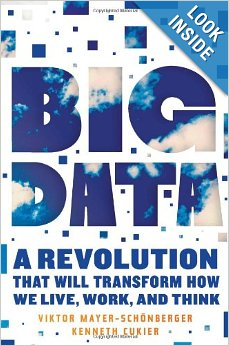 Document Controllers often experience data overload and struggle to keep their work from falling behind while also staying focused and avoiding major time wasters. Keeping track of tens, hundreds or thousands of documents places demands upon even the most experienced of these professionals.
Document Controllers often experience data overload and struggle to keep their work from falling behind while also staying focused and avoiding major time wasters. Keeping track of tens, hundreds or thousands of documents places demands upon even the most experienced of these professionals.
Fortunately, there is software to help go beyond the capabilities of spreadsheets and other commonly used tools in this profession.
This article however is not strictly about document management but rather about data in general…, “Big Data”, to be specific. Having recently read and enjoyed the book called “Big Data”, I’d like to share some interests about this accelerated growth industry with you.
To quote Albert Pimentel, chief sales and marketing officer at Seagate, the term “Big Data” refers to algorithms and software programs that help companies or researchers make discoveries and unearth trends by allowing them to visualize and analyze information better.
There are many other definitions of “Big Data” but looking at a few “numbers” might help describe all of this in more commonly understood terms. We measure large volumes of data in units such as petabytes, exabytes, zetabytes, etc. A ‘petabyte’ is (1,000) to the fifth power and, for our more spatially inclined readers, if one byte was represented by a cube one centimeter on a side, a petabyte (of such cubes) would be a cube 1 kilometer on a side! Note that, as a point of information, the binary equivalent to the petabyte is called a pebibyte and it is 2 to the 50th power, slightly more than 12% greater than the decimal petabyte.
In 2009, Google processed more than 24 petabytes of data each day and stores well over 100 petabytes of data on their servers. This is more than 1000 times the total quantity of all printed material in the US Library of Congress, which holds collections including more than 32 million cataloged books and other printed materials. Twitter users issue more than 400 million tweets per day while Facebook users upload about 10 million photos each hour. Their “Like” clicks alone tally up to about 3 billion each day so we are immersed in “Big Data” and each of us contributes to it.
The answer to the somewhat meaningless question, “How much digital information is there in the world?” changes by the second. In 2012, according to IDC (International Data Corporation), the estimate was 2.7 zetabytes (one million petabytes), a 48% increase from 2011. The data is largely unstructured data like digital video, sound files and images that is challenging to search and retrieve. By 2013 the amount of traffic flowing over the internet annually will reach 667 exabytes, according to Cisco, a maker of communications gear.
The “Big Data” book is not all about numbers. It has a business focus and covers not only how the data is collected, what is collected, who collects it and who owns it but also how it is used and how we could use it. This aspect leads to speculations on how “Big Data” affects every day processes and partially addresses some possibilities of its use… for both good and bad. The authors very well address “Big Data” as a “Revolution” that will transform how we live, work and think.
Now, if your mountain of documents still makes you say, “man, am I swamped!”, consider looking us up and perhaps we can help you better control your document workload.
